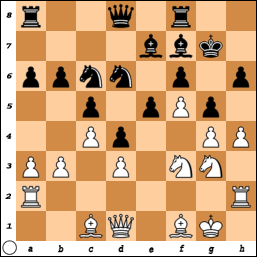Finally, I have had the time and pleasure to get into the Suttles trilogy! Having been away most of this year since it was published, I only took them off the shelf recently.
Wow! What fun books. When I buy Biographies/Collections of GM games, I like to see deep annotations with many of the comments dealing with the psychology of the play and the explanations behind the moves (same thing?), not simply variations. These are here in abundance. I had forgotten (or never understood) how weird most of Suttles' games were. The positions one sees in the diagrams are often "off the wall" at first glance. In fact, one can use the books simply by looking through the pages and diagrams and following the position from there. There will be no shortage of pleasure from that approach. His "anti-positional" play is a joy to follow (thanks to the help of BH's explanations). Yes, I know they may not really be "anti-positional" but they sure look like it when one first plays the moves.
For a couple of weird positions that grab the eye, see the diagrams on page 145 of volume 1 OR the diagram in the Suttles-O'Donnell game on page 33 of volume 1 where the White B's are "developed" to c1 and f1 while the White Rooks are placed on a2 and h2.
I particularly enjoyed the pictures in the centre of volume 1 with much younger shots of some of our best players of the time. The picture of Leslie (Laszlo) Witt reminded me of a free lesson he gave me in a team game from the early 60s in Montreal. I was crushed from the beginning and he won a Pawn, held it into the EG and cashed the win. After the game, I asked him why he had not crushed me with an attack (which he could have done) and his response was, "You had played weakly in the opening, so, I assumed you would do the same in the EG. There was no need to take chances!" He was not being mean, just matter-of-fact.
I can't imagine why any Canadian chess player would not want to own a copy of these books. I am sure Larry has copies remaining. My copies will be at my chair-side for some time to come.
There are more than 1,000 pages of pleasure here!
Wow! What fun books. When I buy Biographies/Collections of GM games, I like to see deep annotations with many of the comments dealing with the psychology of the play and the explanations behind the moves (same thing?), not simply variations. These are here in abundance. I had forgotten (or never understood) how weird most of Suttles' games were. The positions one sees in the diagrams are often "off the wall" at first glance. In fact, one can use the books simply by looking through the pages and diagrams and following the position from there. There will be no shortage of pleasure from that approach. His "anti-positional" play is a joy to follow (thanks to the help of BH's explanations). Yes, I know they may not really be "anti-positional" but they sure look like it when one first plays the moves.
For a couple of weird positions that grab the eye, see the diagrams on page 145 of volume 1 OR the diagram in the Suttles-O'Donnell game on page 33 of volume 1 where the White B's are "developed" to c1 and f1 while the White Rooks are placed on a2 and h2.
I particularly enjoyed the pictures in the centre of volume 1 with much younger shots of some of our best players of the time. The picture of Leslie (Laszlo) Witt reminded me of a free lesson he gave me in a team game from the early 60s in Montreal. I was crushed from the beginning and he won a Pawn, held it into the EG and cashed the win. After the game, I asked him why he had not crushed me with an attack (which he could have done) and his response was, "You had played weakly in the opening, so, I assumed you would do the same in the EG. There was no need to take chances!" He was not being mean, just matter-of-fact.
I can't imagine why any Canadian chess player would not want to own a copy of these books. I am sure Larry has copies remaining. My copies will be at my chair-side for some time to come.
There are more than 1,000 pages of pleasure here!



Comment